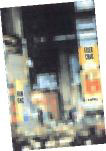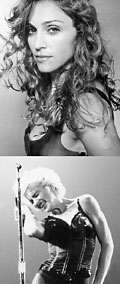FIXER CHAO by Han Ong (Farrar, Straus, & Giroux, $24)
WILLIAM PAULINHA hasn’t had a pleasant American dream. The antihero of playwright Han Ong’s debut novel, Fixer Chao, moved to the U.S. from Manila as a youngster, and, now a broke and artistically frustrated New Yorker just over 30, he finds life has become an anticlimactic nightmare. What sounds like a potential immigrant narrative—in which the foreigner, after enduring prejudice and hard labor, finds fulfillment in America—is in fact just the opposite. Beneath the book’s graceful prose and wry humor, Ong sets up a pessimistic scenario in which the fully assimilated immigrant, experiencing both the duress of poverty and the luxury of wealth, still can’t find happiness.
William begins at the bottom. A former hustler who trolled bus station restrooms “for a cut of the overweight white businessman business,” he’s currently an aspiring writer who has yet to place pen to paper. Instead, he haunts the Savoy, a sketchy Times Square queer bar, or shuffles along the streets outside his drab apartment building, dwelling on his disappointing existence: “Behind the windows at Big Wong hung pieces of meat dripping juices onto a metal trough, like some primitive timekeeping device, each ping on the stainless-steel surface one second—my whole life the same way, I thought, dribbling away.”
The path that leads him out of midtown’s seedy underground and into the regal high-rises of upper Manhattan becomes clear when he bumps into Shem C, a failed writer seeking revenge against an elite circle of New Yorkers that played a role in his fall from high society. Because William is “a sample citizen” of the city’s lower crust—and an Asian one at that—Shem enrolls his help. The plan, and William’s subsequent execution of it, is simple: William is now Master Chao, professional feng shui consultant to wealthy Uptowners like the hyped poet Lindsay S, egomaniacal book editor Cardie Kerchpoff, and socialite trendsetter Suzy Yamada. He’s Chinese, no longer Filipino. Never mind that he doesn’t know feng shui from tai chi: He charges his clients exorbitant fees, swipes priceless objects from their posh pads, and—assuming that feng shui actually works—rearranges their furniture to cause irreparable damage to their despicably upper-class lives.
RICH VILLAINS don’t exist in Fixer Chao—but they should. Aside from writing his novel 150 pages too long, Ong’s biggest mistake was not creating more vividly contemptible scoundrels, not because cash necessarily corrupts the soul, but because these partially painted characters make William a protagonist without much relevance. Yes, these aristocrats are shallow, greedy, annoying, and occasionally cruel, but they fail to fuel the brilliant-sounding premise of a fake feng shui consultant wreaking havoc on the affluent.
Also disappointingly, whenever Ong picks up a race card, he drops it just as quickly. William notes that most of his clients are white, despises the way they voice crass comments like “[Filipinos] make the best servants,” and provides an intriguing theory on the West’s fascination with feng shui: “[My clients] . . . were more than happy to preserve me in the brine of ancient stereotype: a soul directly linked to the ancestral past, shot through with the very thing which the white man had given up in exchange for technological advancement—spiritual enlightenment. . . .” But whites aren’t the only ones nurturing oppression, racial or otherwise: This upper class also has Asian members—like Suzy Yamada, who employs Asian servants, and the parodic Paul Chan Chuang Toledo Lin, a closeted gay novelist who argues for the end of Asian-man-as-effeminate-man stereotype. Likewise, no one forces William to wear slipperlike shoes and bow profusely.
More about money than race, the hierarchy in Fixer Chao suggests that self-serving ambition has utterly replaced Americans’ pursuit of happiness. William is an antihero, not just because the reader shamelessly supports his screwing with rich people’s furniture schematics but also because he goes through a kind of retrogression. Feeling early pangs of remorse for being an impostor, he admits, “I want to be good,” to a wealthy pal. But at the end of his ascent of a societal ladder that looks as rotten at the top as it does at the bottom, William concludes how one achieves in America. While pondering one of New York’s “almost always Latino or black” doormen, he notes: “I thought of myself as having started at the same line, but somehow rescued by being the owner in greater quantity of the following traits: initiative, discontent, pessimism, clarity, duplicity, obstreperousness, not obsequiousness.”
Fixer Chao‘s creative, sarcastic tweaking of the immigrant narrative may be original, but unfortunately one can learn little from a foreigner who has journeyed to America only to drown in a sea of cynicism.








